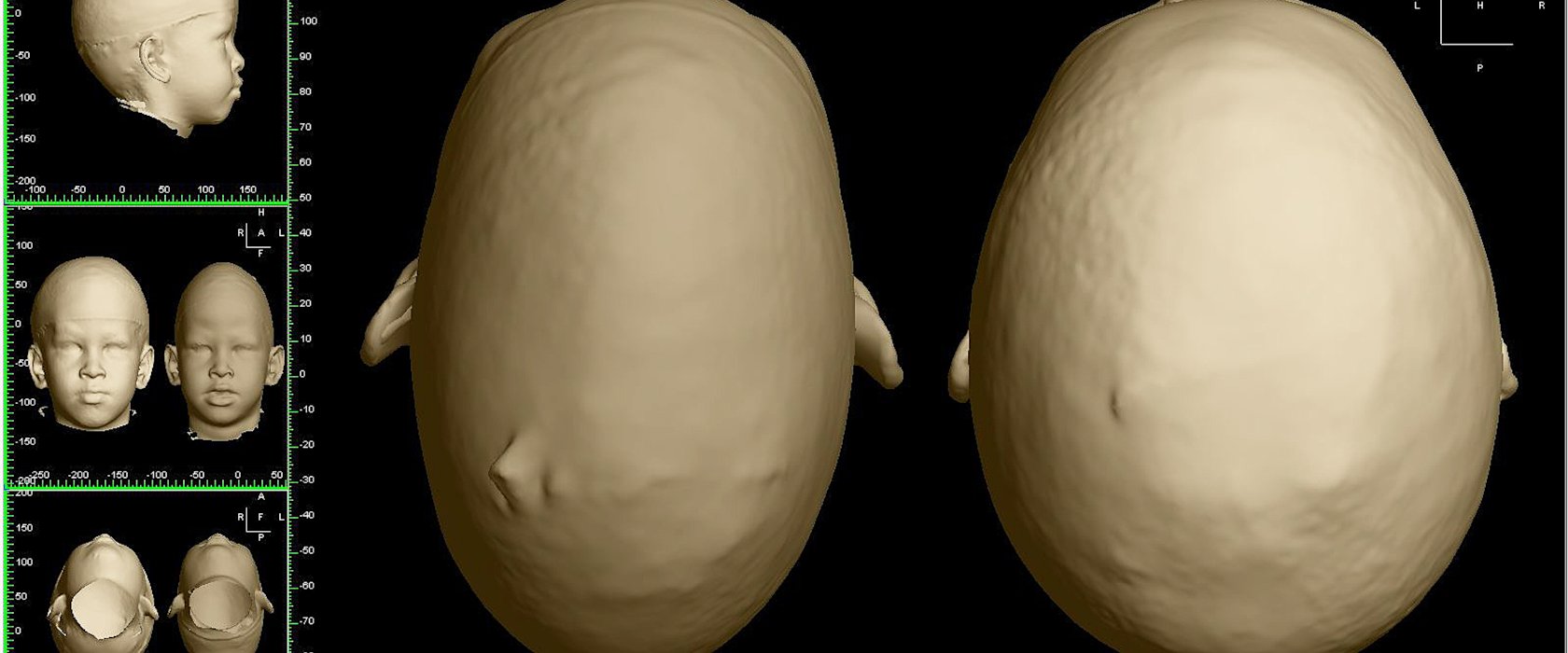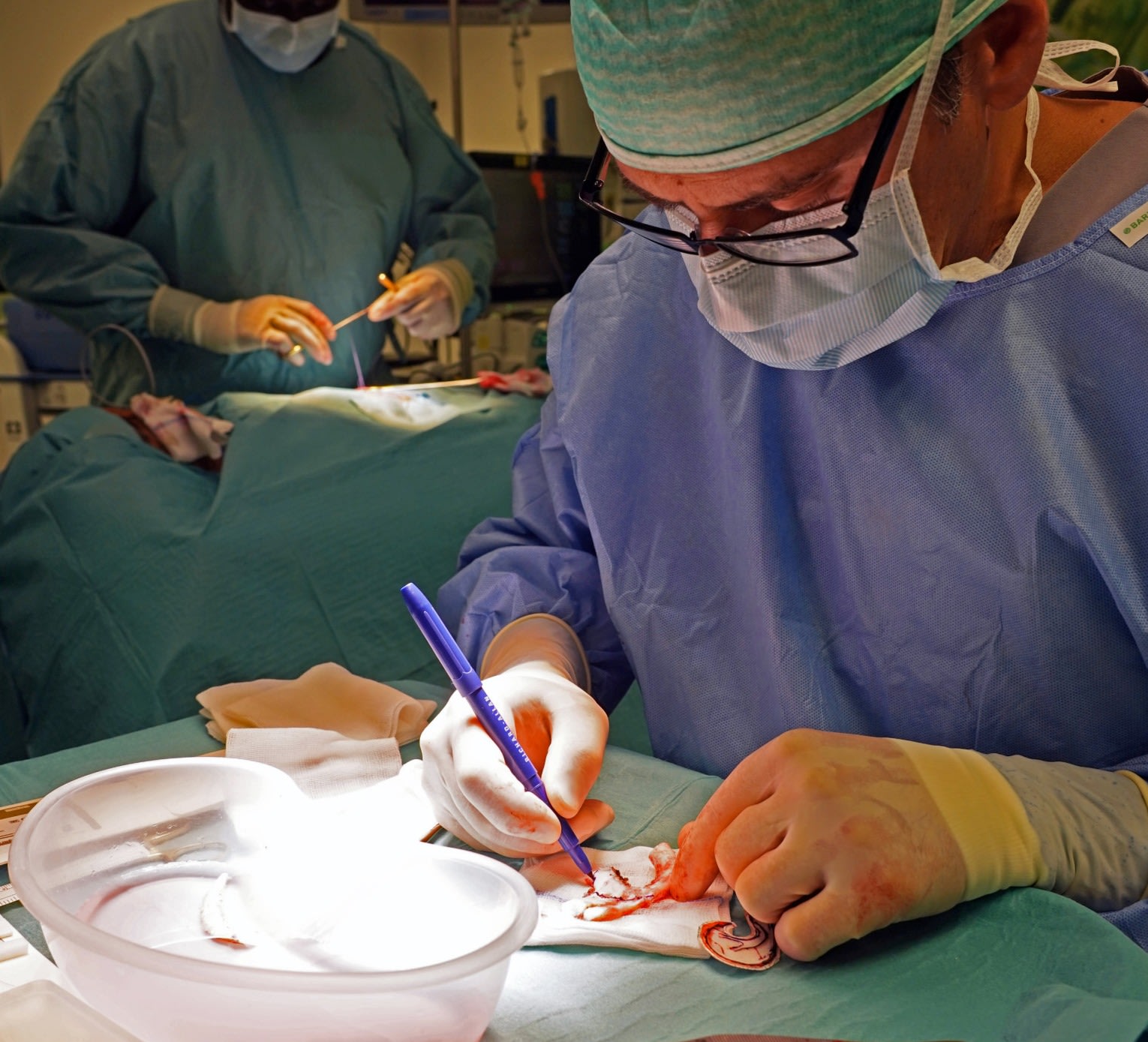Coronavirus (COVID-19) Updates
For the latest COVID-19 information and updates from Qatar Foundation, please visit our Statements page

Top view images of before and after of an ear reconstruction
Surgical procedures at Qatar Foundation’s Sidra Medicine go beyond appearances
The first thing that typically comes to mind when plastic surgery is mentioned is a cosmetic “lift or tuck” performed for the purposes of vanity. At Qatar Foundation’s Sidra Medicine, however, the Division of Plastic, Craniofacial, and Hand Surgery has a very different objective. Focusing exclusively on children with deformities caused by congenital errors or from trauma, their work is often life-changing both in terms of restoring critical function – such as breathing, chewing, speech, brain growth, hand function – as well as in normalizing facial appearance and fostering psychosocial well-being.
For Dr. Mitchell Stotland, offering these types of plastic surgical treatments has been his life’s passion. Dr. Stotland began to build the Division of Plastic, Craniofacial, and Hand Surgery (PCFHS) at Sidra Medicine seven years ago, well before the opening of the Outpatient Center in 2016, and the main hospital facility in 2018.

Before and after photos of Abdulrahman after undergoing ear reconstruction surgery at Sidra Medicine

The most common types of conditions that his team manages each day include cleft lip and cleft palate, complex skull and facial deformities, facial palsy, congenital absence of the ear, congenital and traumatic hand deformities, and various other reconstructive challenges throughout the body.
While this type of pediatric plastic surgery is of immense benefit to the community, surgeons with the types of qualifications and experience that Dr. Stotland and his colleague Dr. Graeme Glass at Sidra’s PCFHS team have is unusual. Because many of the conditions that they treat are rare and complex, their clinical specialty represents an exclusive niche in medicine.
We construct ears for children somewhere between the age of seven to 10 by using cartilage from several of their own ribs
One area within his work that Dr. Stotland has nurtured a special passion for is ear reconstruction. He is able to build ears for children who are born without them – a medical condition known as microtia. “We construct ears for children somewhere between the age of seven to 10 by using cartilage from several of their own ribs. While the surgery does not improve hearing, because the key anatomic structures are inside one’s head, creating a normal outer ear for a child has tremendous benefit in terms of augmenting their self-esteem by allowing them to look and feel more normal,” he says.
As a teenager, inspiration for a future career literally struck Dr. Stotland out of the blue when he serendipitously came upon a documentary on public television one evening that profiled the legendary French surgeon Paul Tessier – known as the father of craniofacial surgery. “I remember it like it was yesterday, even though it's about 40 years ago now. I watched his artistry, his laser-focus, his courage, and the astonishing transformations that he achieved for young children and simply thought right there and then – I want to do that. I need to do that.

Dr. Stotland in Sidra Medicine’s operating room working on a ear reconstruction
“I didn't actually know it was plastic surgery that I was watching, or what the educational and training path was to do that sort of work. But that was when the lightbulb went on. And I followed it. Seventeen years later, less than a year after finally completing my training, I met Dr. Tessier and had the joy of sharing that story with him,” he says.
One of the blessings of working in pediatric plastic surgery is the privilege that providers have of forming long-term bonds with their patients and their families. Many of the conditions require years of staged interventions, and the influence of growth can cause changes that need to be followed and managed over time.
Dr. Stotland says: “For many conditions (for example, cleft lip and palate), we let parents know when we first meet them shortly after their babies are born that there are many factors that need to be taken care of over time, including the impact of the cleft on facial aesthetics both initially and over time with growth, as well as its influence on feeding, speech, teeth, hearing, and nasal breathing.”
Getting to know the extended family in that way over time really brings a greater sense of fulfillment to a doctor
This means that children and their families often form close relationships with their medical teams – and certainly vice versa as well. “If I’m treating a 40-year old patient, I might not meet anyone else along with the patient. But with a child, you meet their parents and siblings, often their grandparents too. And getting to know the extended family in that way over time really brings a greater sense of fulfillment to a doctor,” he adds.

Dr. Mitchell Stotland
By better informing parents we enhance their sense of empowerment through the treatment process
The other side of that coin, however, is the heightened importance that parents place on any medical encounter involving their children. “Parents will often say in general that they can manage their own trauma, their own failures, their own concerns, but it's so much harder to suffer through their child's tribulations and traumas,” Dr. Stotland says. “Allaying these fears and communicating clearly and effectively is key to ensuring we do our jobs well. By better informing parents we enhance their sense of empowerment through the treatment process.”

